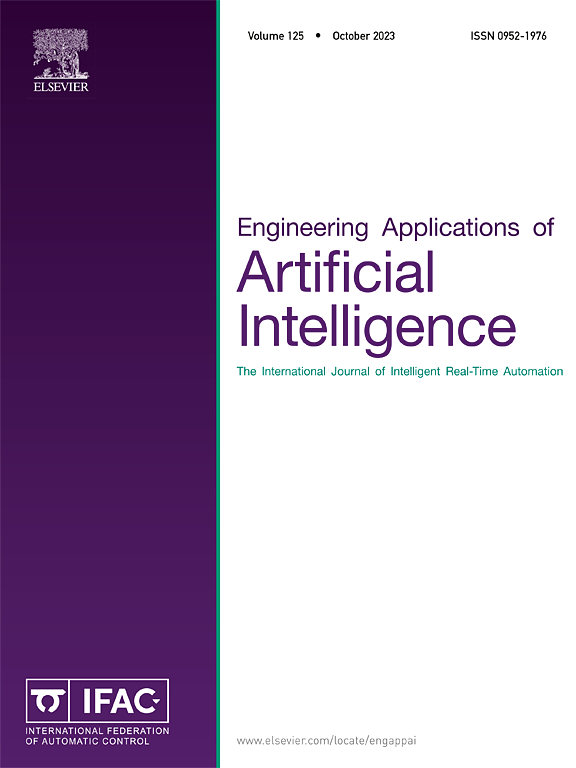Multi-class Agent Trajectory Prediction with Selective State Spaces for autonomous driving
IF 7.5
2区 计算机科学
Q1 AUTOMATION & CONTROL SYSTEMS
Engineering Applications of Artificial Intelligence
Pub Date : 2025-05-19
DOI:10.1016/j.engappai.2025.111027
引用次数: 0
Abstract
Understanding and predicting multi-class agents’ movement has become more critical and challenging in diverse applications such as autonomous driving and urban intelligent monitoring. The current research mainly focuses on the motion trajectory of single-class agents. However, due to real traffic scenarios’ complexity and interactive behaviors’ variability, the motion patterns displayed by various classes of agents show inherent randomness. In this paper, inspired by the linear-time sequence model Mamba, we propose a Multi-class Agent Trajectory Prediction with Selective State Spaces (MTPSS) to model the interaction between different agents and better predict the trajectory of an individual. Specifically, MTPSS includes modeling relationships in both temporal and spatial dimensions. When encoding the spatial correlation within the trajectory graph, we construct a category-based sorting approach, which puts large-size category nodes behind to enhance contextual access. Then the sorted nodes are bi-directionally scanned through Mamba blocks, which makes the model more robust to permutations. In terms of temporal, considering the highly dynamic nature of rapidly moving agents, we utilize Mamba’s remarkable performance on sequential data to effectively conduct temporal scans to capture long-range temporal dependencies. Finally, to compute physically feasible trajectories, MTPSS employs the Neural Ordinary Differential Equation to smooth the predicted trajectory of the agent. We conducted extensive experiments on two publicly available traffic datasets and compared our method with state-of-the-art methods. Quantitative experiments show that our performance metrics are superior to state-of-the-art methods, and qualitative experiments demonstrate that the predicted trajectories have good diversity, which shows its potential in real-world traffic scenarios.
基于选择状态空间的自动驾驶多类智能体轨迹预测
在自动驾驶和城市智能监控等各种应用中,理解和预测多类别智能体的运动变得更加关键和具有挑战性。目前的研究主要集中在单类智能体的运动轨迹上。然而,由于真实交通场景的复杂性和交互行为的多变性,各类智能体所表现出的运动模式具有固有的随机性。本文受线性时间序列模型Mamba的启发,提出了一种基于选择性状态空间(MTPSS)的多类智能体轨迹预测方法,用于模拟不同智能体之间的相互作用,从而更好地预测个体的轨迹。具体来说,MTPSS包括时间和空间维度上的关系建模。在对轨迹图中的空间相关性进行编码时,我们构建了一种基于类别的排序方法,该方法将大尺寸的类别节点放在后面,以增强上下文访问。然后通过Mamba块双向扫描排序节点,使模型对排列具有更强的鲁棒性。在时间方面,考虑到快速移动代理的高度动态性,我们利用Mamba在顺序数据上的卓越性能来有效地进行时间扫描,以捕获远程时间依赖性。最后,为了计算物理可行的轨迹,MTPSS采用神经常微分方程对智能体的预测轨迹进行平滑处理。我们在两个公开可用的交通数据集上进行了广泛的实验,并将我们的方法与最先进的方法进行了比较。定量实验表明,我们的性能指标优于最先进的方法,定性实验表明,预测的轨迹具有良好的多样性,这表明了它在现实交通场景中的潜力。
本文章由计算机程序翻译,如有差异,请以英文原文为准。
求助全文
约1分钟内获得全文
求助全文
来源期刊

Engineering Applications of Artificial Intelligence
工程技术-工程:电子与电气
CiteScore
9.60
自引率
10.00%
发文量
505
审稿时长
68 days
期刊介绍:
Artificial Intelligence (AI) is pivotal in driving the fourth industrial revolution, witnessing remarkable advancements across various machine learning methodologies. AI techniques have become indispensable tools for practicing engineers, enabling them to tackle previously insurmountable challenges. Engineering Applications of Artificial Intelligence serves as a global platform for the swift dissemination of research elucidating the practical application of AI methods across all engineering disciplines. Submitted papers are expected to present novel aspects of AI utilized in real-world engineering applications, validated using publicly available datasets to ensure the replicability of research outcomes. Join us in exploring the transformative potential of AI in engineering.
 求助内容:
求助内容: 应助结果提醒方式:
应助结果提醒方式:


